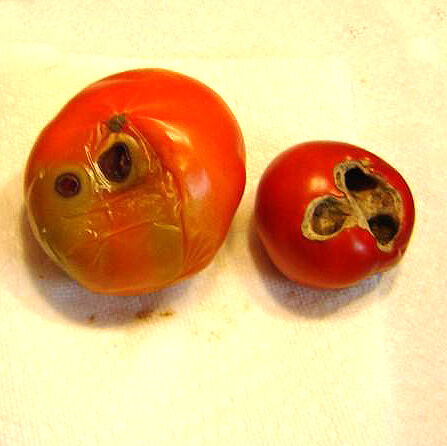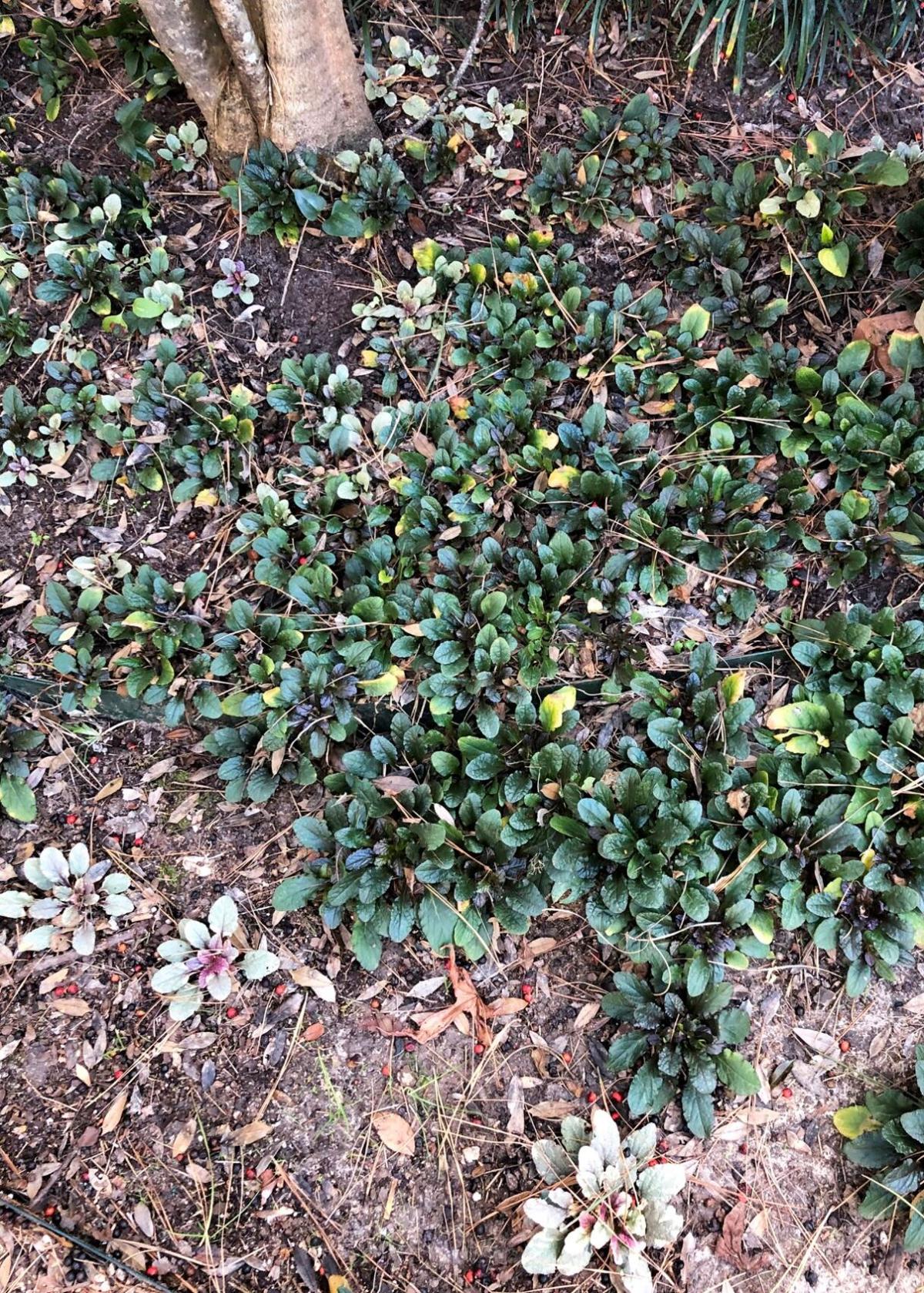Dear Neil: How can I avoid this on my tomatoes this year?
A: It looks like anthracnose, a common disease of tomato fruit. Google “Aggie Horticulture tomato anthracnose photo” and you’ll see a photograph that is almost a match for yours. TAMU suggests that you keep the foliage and fruit dry when you’re watering them and that you use a labeled fungicide as needed.
Dear Neil: My bermuda lawn actually has only a few patches that make a thick carpet-like turf. Will overseeding it help give it a better look?
A: You don’t overseed bermuda. The seed is too fine. Dig plugs from the thick areas and transplant them into the thin spots. That’s a job for late April or May, once the grass is growing vigorously. Make sure the thin areas get the same amount of sunlight (eight hours of full, direct sunlight in summer). That might be a reason for the difference.
Dear Neil: I’ve been following your advice on various gardening topics, including pruning my live oaks between Thanksgiving and Valentine’s Day. I’m concerned about the color of the attached image. I’ve noticed the dark coloring bleeding in on a couple of branches, but not on all the branches I cut. I used pruning sealant, but if there is a disease involved I want to take action sooner rather than later.
A: I’m having trouble getting my perspective with your photo. It looks like the cut wound is trying to heal. A roll of new bark is forming around the perimeter of the cut. That’s what we want. However, I can’t tell if this is on an extended stub or if the trunk is nearby. It appears to be a stub, and if so, that will never heal properly. Ideally you will leave only a short section (1/4-inch, perhaps slightly more) of branch collar rather than making the cut flush with the trunk or remaining branch. It drops out of focus and I just can’t tell.
Dear Neil: I’m new to Texas. I had pentas, bougainvillea and lantanas at our house in South Texas. I didn’t realize the winter spell would be cold enough to get them. Now I have a lot of frazzled foliage. What is dead and what can I cut back to come back?
A: We’re glad you’re here! The cold at the end of December was significant. It would have killed pentas. They’re annuals. It probably got the bougainvilleas depending on how cold it got where your plants are. They’ll take light freezes, but much of the state had much colder weather than that. Lantanas are hardier. Most bush types are perennials and will come back from their roots. You can cut the tops back near the soil line.
Dear Neil: Have you ever seen okra grow to more than 14 feet tall?
A: Personally, I have not, but I’ve certainly seen rogue plants that attained significant heights of 8 or 10 feet. Seed breeders, of course, would not use those in their production programs because no one wants to have to haul a ladder out to the garden to harvest any vegetable, plus they wouldn’t want the excessive shade such a tall crop would cast. But it makes for a fun novelty crop to have in your own backyard.
Dear Neil: I am concerned about my ajuga developing these yellowed leaves. Other than the single yellowed leaves the plants seem healthy and continue to grow. When I look online all I find for ajuga is “crown rot,” but that doesn’t seem to be a match. What could it be?
A: Looking at your photo and also at your close-ups of the leaves, it just looks like old leaves that are shutting up shop — their work is done. They will turn brown and shrivel, but they’ll be replaced with bright, new growth in just a few weeks. It also appears that you have a variegated variety that you’ve planted along the front of this bed. I’m not sure that will prove to be a good plan. The green ajuga will overtake it. It would be better to have the variegated variety in a grouping somewhere else in your landscape, also in the shade. Be sure you keep the bed moist all winter long — not wet, but certainly never dry.
Have a question you’d like Neil to consider? E-mail him at mailbag@sperrygardens.com. Neil regrets that he cannot reply to questions individually.
"fruit" - Google News
January 14, 2022 at 01:00PM
https://ift.tt/31W9mH1
TEXAS GARDENING: Anthracnose is a common foe for tomato fruit - Bryan-College Station Eagle
"fruit" - Google News
https://ift.tt/2pWUrc9
https://ift.tt/3aVawBg
Bagikan Berita Ini

















0 Response to "TEXAS GARDENING: Anthracnose is a common foe for tomato fruit - Bryan-College Station Eagle"
Post a Comment